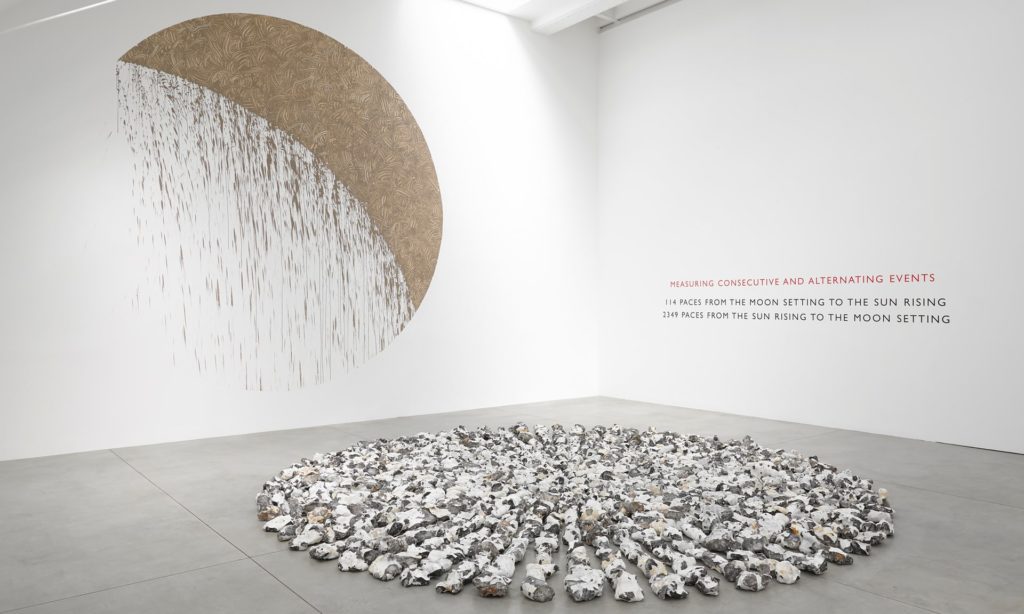
The wandering artist’s perennial walks have led him to contemplate sun, moon and stars with the devoted awe of mankind’s early ancestors. Mud is not a promising medium to draw with. It is dull, thick, unpromising stuff. A muddy drawing sounds like a vague and boring one. Miraculously, however – or maybe just because he’s spent 50 years making art in and of the land – Richard Long’s huge new mud drawing Gravity Crescent is hypnotic, full of complex 3D curves that snare the eye.
It looks as if eels are nesting in the wall. They writhe and wriggle, each tubular body created by a swerve of Long’s mud-stick. The raw wet earth with which he created this towering work, on a pristine white wall in London’s Lisson Gallery, comes from the river Avon, so perhaps the material is haunted by the river’s flashing, silver-scaled creatures. His muddy swirls mass in an engrossing swarm. The flow and life of the river seems caught in this whirlpool of mud.
Gravity Crescent forms part of a vast unfinished circle. Below one section, muddy drips plummet like raindrops. The filled-in segment is crescent-shaped. Is it a croissant? Is it a piece of cake? No, it is the waxing moon. And beneath it, a stone circle fills the floor. It is a perfect disc, made simply by arranging radiating lines of rocks.
Once again, Long’s feeling for nature lets him do something artistically magical. The stones are all flints. Their glistening white surfaces shine brightly, set off by flecks of black, to create a dazzling circle of light. It is the sun. Long’s installation is a cosmic picture of the two great discs in the sky. It is as if the megalithic builders of the stone age have set up shop at one of London’s top commercial galleries.
